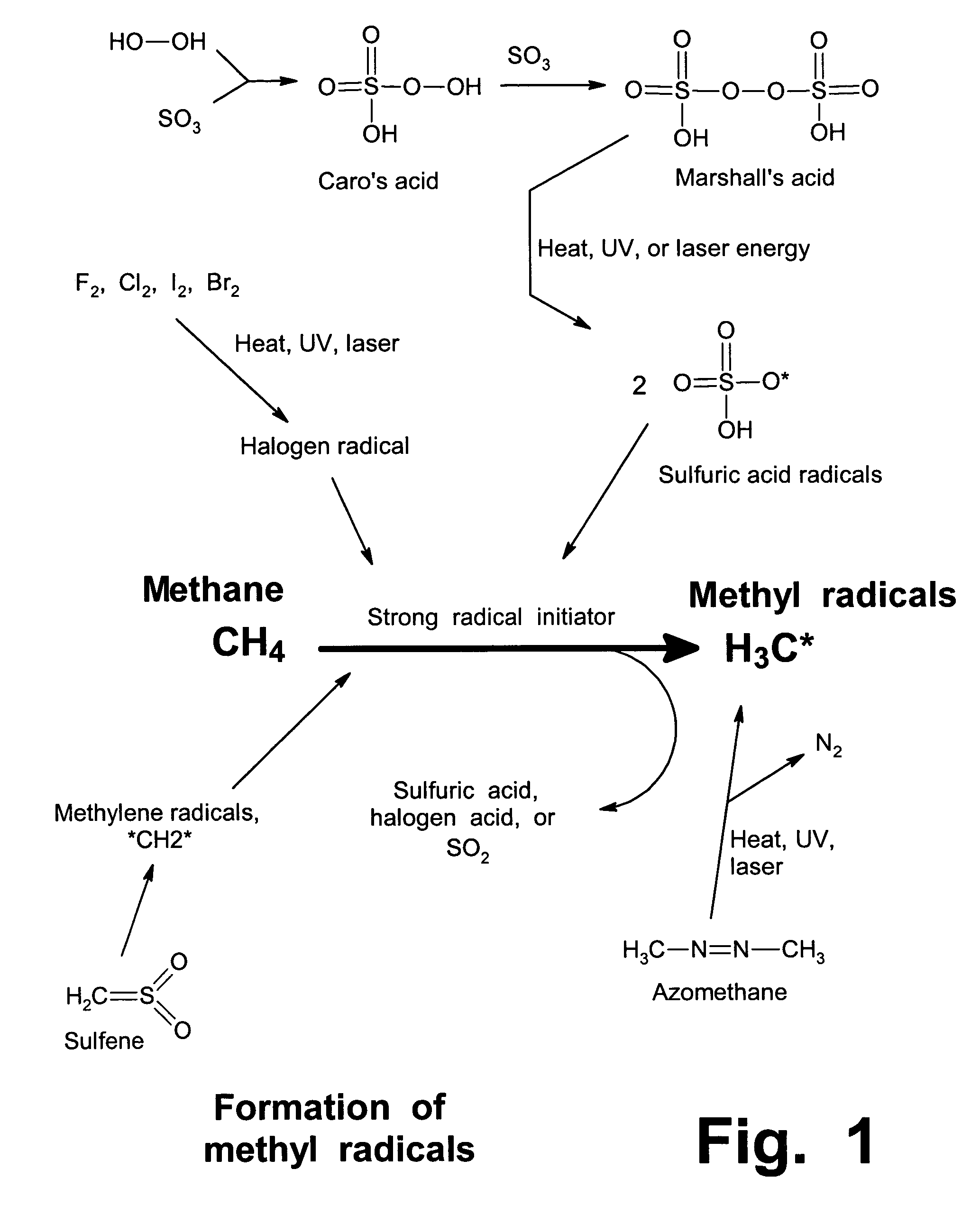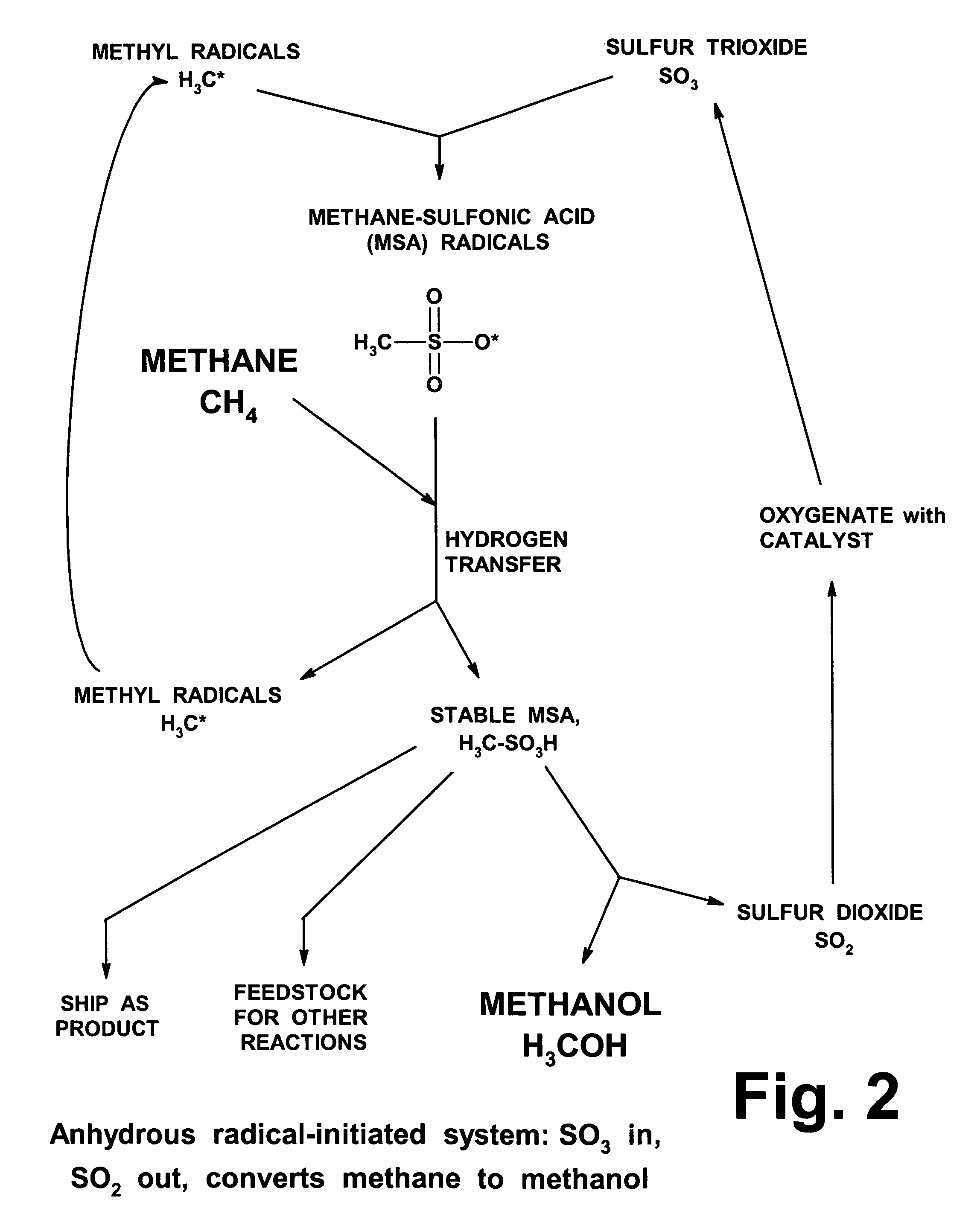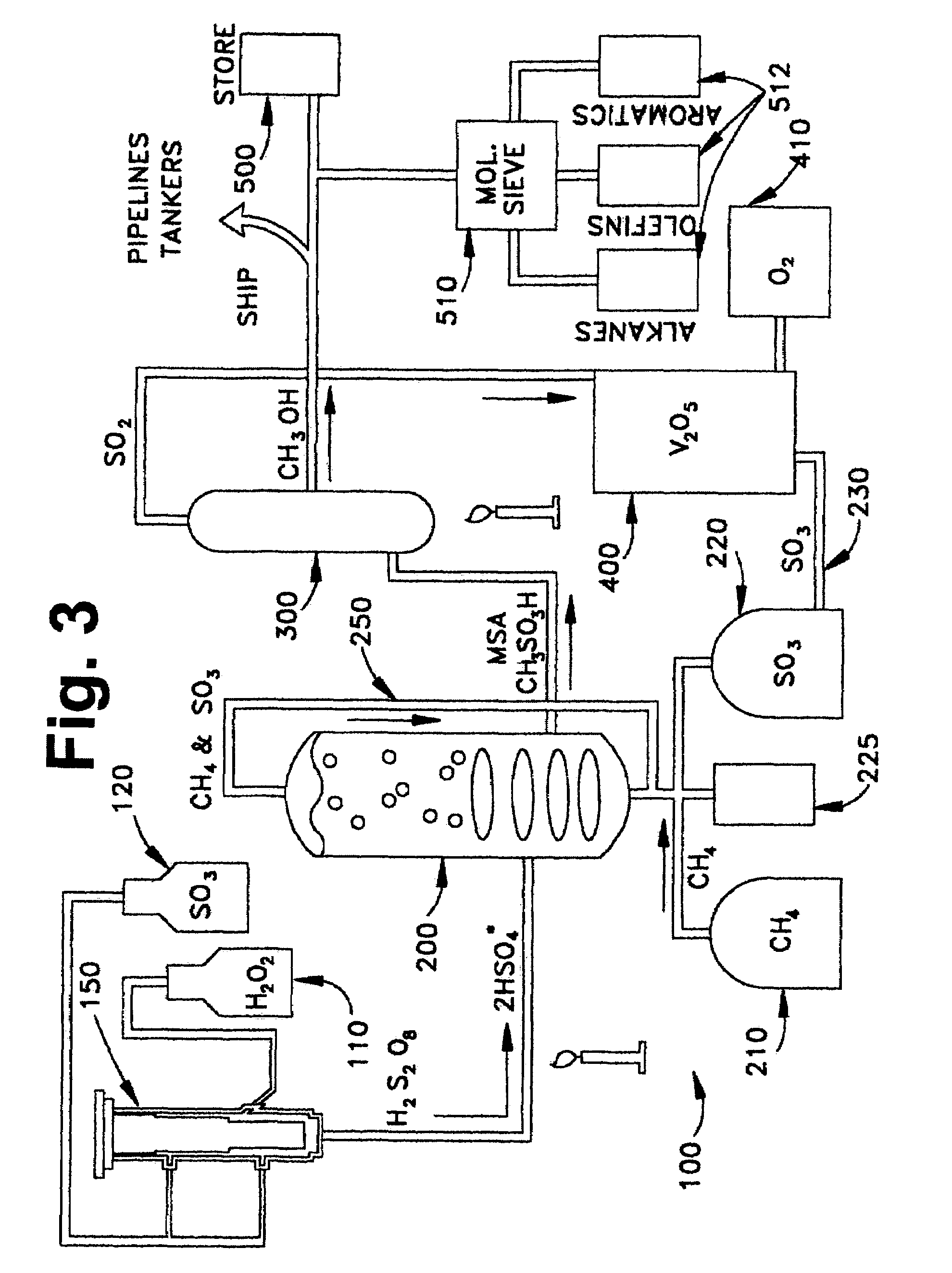Anhydrous processing of methane into methane-sulfonic acid, methanol, and other compounds
a technology of methane and sulfonic acid, which is applied in the field of hydrocarbon chemistry and organic chemistry, can solve the problems of large quantities of methane gas wasted every day, small quantities, low yield, and none of those efforts ever created yields sufficient to support commercial use at oil-producing sites, and achieves the effect of increasing solubility and reaction rates
- Summary
- Abstract
- Description
- Claims
- Application Information
AI Technical Summary
Benefits of technology
Problems solved by technology
Method used
Image
Examples
example 1
Equipment and Reagents
[0113]The initial confirmatory tests, described in Examples 1-6, were done in the laboratories of Prof. Ayusman Sen, in the Chemistry Department at Pennsylvania State University. Experiments were carried out under inert gas (nitrogen, N2) in a glovebox or glovebag. Except as noted below, the reactions were carried out in a sealed vessel designed to withstand high pressures (commonly referred to in chemistry labs as “bombs”), containing a glass liner (this liner, which can be easily removed for cleaning and sterilization, will not break when high pressures are reached inside the bomb, because pressures are equal on both sides of the walls of a liner). The bomb used has ⅜ inch stainless steel walls, and an internal chamber 1.5 inches in diameter and 4.5 inches high. The glass liner had an internal diameter of 1.24 inches, a height of 4 inches, and a wall thickness of 1 / 16 inch. A 1-inch stirring bar was used in some tests.
[0114]In a number of experiments, a vial ...
example 2
Preparation of Marshall's Acid
[0115]To prepare Marshall's acid, gaseous SO3 in N2 was loaded into a vessel containing 70% H2O2 in water, at 13 to 15° C. The reaction continued with stirring until essentially all liquid reagents had been consumed, confirmed by presence of a consistent viscous solution with solid crystals and no inhomogeneous liquids.
[0116]In Run #1, 6.9 g (86.3 mmol) of SO3 was absorbed in 1.1 g of 70% H2O2 (22.7 mmol) in water (17.7 mmol), for 5.5 hours. After accounting for the diversion of some SO3 into H2SO4, the molar ratio of SO3 to H2O2 was 3:1. It was presumed that all H2O2 was converted to Marshall's acid (H2S2O8), and all water was converted to H2SO4. Calculations and assumptions indicated Marshall's acid at 22.7 mmol (56.2% of the total solution, by weight), and sulfuric acid at 17.7 mmol (21.3%), with unreacted SO3 present at 23.2 mmol (22.5%).
[0117]In Run 2, 5.2 g (65 mmol) of SO3 was absorbed in 1.2 g of 70% H2O2 (25 mmol) in water (19.4 mmol), for 5.5 ...
example 3
Procedures for Testing MSA Formation
[0120]The tests described below used MSA / SO3 mixtures as the liquid media (gaseous SO3 can be absorbed in MSA at ratios up to about 10:1). A solution of SO3, dissolved in a known quantity of liquid MSA that acted as an amphoteric solvent, was placed in a glass vial, described above. 1 to 2 grams of Marshall's acid solution (Example 2) was placed in the same vial. The vial was placed in the larger glass liner inside the bomb, and 3 to 5 g of stabilized liquid SO3 was loaded into the liner. This approach (dividing the SO3 into two separate zones) was taken to prevent the Marshall's acid from being overloaded with SO3, since high concentrations of SO3 can degrade Marshall's acid, releasing oxygen and destroying its peroxide bond.
[0121]The bomb was sealed and pressurized with 800-1400 psi of methane. It was heated to 48-52° C., and pressure was monitored. Heating was continued until the pressure dropped to an asymptotic level. The bomb was allowed to ...
PUM
| Property | Measurement | Unit |
|---|---|---|
| temperature | aaaaa | aaaaa |
| temperature | aaaaa | aaaaa |
| diameter | aaaaa | aaaaa |
Abstract
Description
Claims
Application Information
 Login to View More
Login to View More - R&D
- Intellectual Property
- Life Sciences
- Materials
- Tech Scout
- Unparalleled Data Quality
- Higher Quality Content
- 60% Fewer Hallucinations
Browse by: Latest US Patents, China's latest patents, Technical Efficacy Thesaurus, Application Domain, Technology Topic, Popular Technical Reports.
© 2025 PatSnap. All rights reserved.Legal|Privacy policy|Modern Slavery Act Transparency Statement|Sitemap|About US| Contact US: help@patsnap.com



